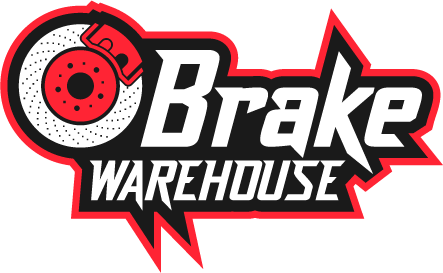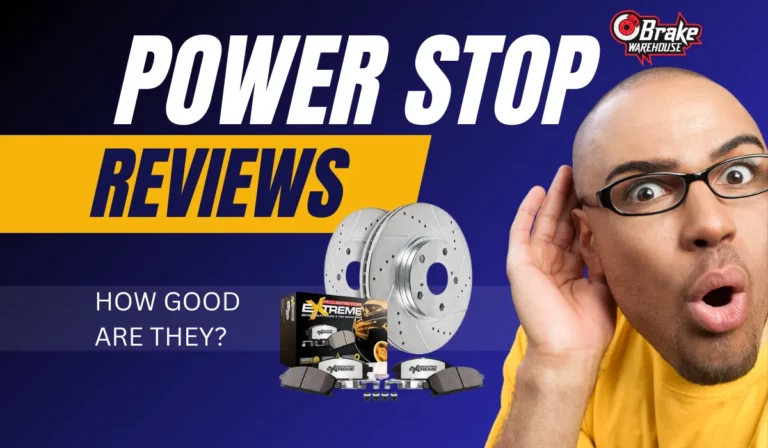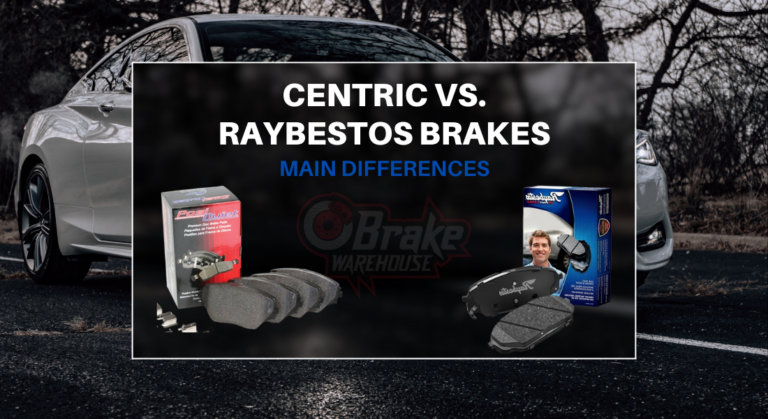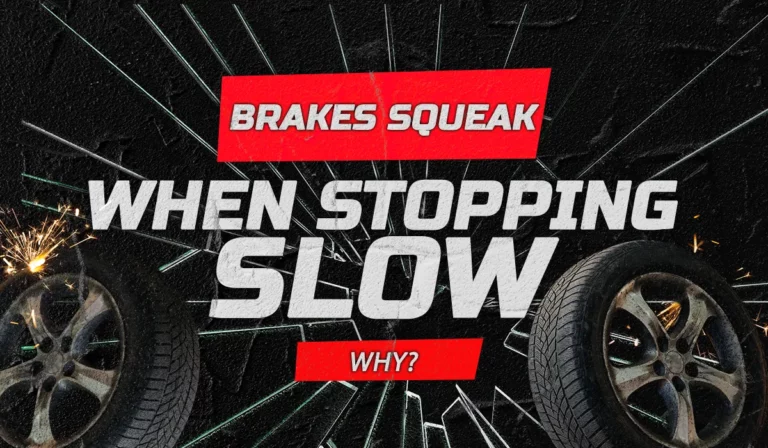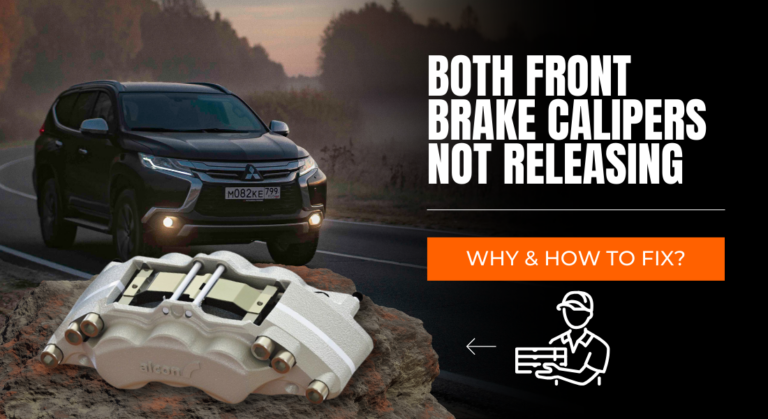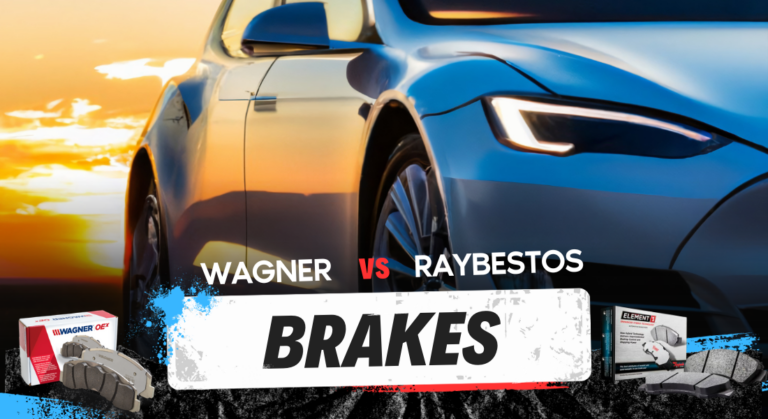Not Enough Vacuum for Brake Booster – How To Fix It?
The brake booster is a game changer for the automobile industry. It helps drivers to slow down or stop larger vehicles with little pedal pressure & ensures safety by checking the effectiveness of wheel brakes.
Without proper vacuum, a brake booster can’t function properly – causing issues like a hard pedal, hissing sound, etc. If you’re facing this type of problem due to an inadequate vacuum for the brake booster, this article has your solution.
In this article, I’ll discuss the possible reasons behind not having enough vacuum for brake boosters and how to fix them. That being said, let’s get started.

5 Most Common Causes of Not Enough Vacuum for Brake Booster
Improper vacuum issues can happen for multiple reasons, as the brake booster system depends on several components. Here are some of the most common causes of not enough vacuum for brake booster:
- Leak in vacuum line or connector (hose)
- Using the sized vacuum booster
- Faulty vacuum check valve
- Faulty brake booster pressure sensor
- Low engine vacuum pressure
How To Fix Not Enough Vacuum for Brake Booster: 7 Possible Fixes
The brake booster is located between the brake pedal and the master cylinder, and it helps multiply the pedal pressure to the master cylinder.
Since the brake booster involves multiple components, one solution can’t definitively resolve the issue of insufficient vacuum pressure. That’s why there are several potential fixes you should explore.
Let’s go through them one by one:
1. Get the Correct Vacuum Hose

Consider checking your vacuum hose, is it a vacuum hose or a ⅜” fuel hose? If you’re using a fuel hose for vacuum purposes, it won’t be a reliable solution & you’ll notice issues like not enough vacuum for the brake booster.
Replace the previous fuel hose with an 11/32″ vacuum hose and check if the problem remains. If changing the fuel hose doesn’t fix the problem, follow the next solution.
2. Check Vacuum Source & Fittings

After ensuring your vehicle has the correct-sized vacuum hose, check the vacuum source and fittings. Make sure you’re using a port wide enough for the engine to pull the proper vacuum through the fittings.
An ideal size for the port of the intake manifold is around ⅜” NPT. Make sure you’re using the ideal sized (or something near the ideal size) port. By doing this, you’re allowing the engine to pull as much pressure as possible for the brake booster.
3. Inspect The Vacuum Check Valve

The vacuum check valve is a one-way valve that allows vacuum pressure into the brake booster and holds it in place.
This component prevents air from entering the brake booster, which can cause a loss of vacuum and make it harder to press the brake pedal.
Here’s how you can test whether your vacuum check valve is leaking or not:
- Remove Valve: Take out the check valve from the vacuum line.
- Air Test: Blow or let air flow through the valve in its normal direction. If it doesn’t leak, it’s good.
- Reverse Test: Try blowing air in the opposite direction. If it leaks or doesn’t block the air, replace it with a new valve.
4. Check the Brake Booster Pressure Sensor

The brake booster pressure sensor is an electronic component equipped with vacuum pumps for their brake boosters. The purpose of this sensor is to monitor & measure the amount of vacuum inside the vacuum booster.
Here’s how you can check a booster pressure sensor:
- Turn off the engine and pump the brake pedal 4-5 times to release booster pressure.
- Get a vacuum gauge and connect it to the vacuum supply hose.
- Start the engine and watch the gauge. If the pressure sensor works fine, the gauge should rise when you press the brake pedal. Otherwise, it won’t.
If you find an issue with the sensor, consult a mechanic for proper diagnosis and repair.
Read Also: No Brake Pressure after Bleeding – Why & How To Fix It?
5. Verify Proper Booster Size

The booster you’re using may be a wrong-sized brake booster, and it is struggling to generate enough pressure for the master cylinder, causing a hard pedal.
Check your car’s owner’s manual and ensure you use the right-sized booster.
6. Install a Vacuum Canister

If the engine is failing to produce enough pressure for the brake booster, you can try an external source of pressure for the brake booster. A canister can help you in this regard.
A vacuum canister can help solve the problem of not having enough vacuum for the brake booster by storing vacuum pressure that can be used later. Means, the canister will continue holding vacuum pressure when the engine is on.
Later on, pressing the pedal releases the vacuum pressure to the brake brake booster – solving the hard pedal issue.
Note: A vacuum canister can be installed in the vacuum line between the engine and the brake booster; consult an expert for this operation.
7. Install an Electric Vacuum Pump

If installing a canister can’t solve the issue, try installing an electric vacuum pump.
Here are some of the ways installing an electric vacuum pump can be helpful for you:
- Ensure brake booster operation even when the engine’s vacuum supply is insufficient.
- Maintain consistent and reliable brake system performance.
If you’re thinking about whether or not you can use a canister and an electric vacuum pump together, then the answer is – yes, you can use them together, and it will enhance your braking performance more.
Read Also: No Brake Pressure After Changing Calipers – Why & How To Fix It?
How To Prevent Brake Booster Vacuum Issue?
“Prevention is better than cure” is true for this case as well. Follow these simple steps to prevent your vehicle’s brake from jamming due to improper vacuum for the brake booster:
- Regular Maintenance: Ensure routine vehicle maintenance, including vacuum leak checks, brake fluid monitoring, and brake system assessments.
- Check Vacuum Supply: Verify that the vacuum supply meets the requirement; consider adding a vacuum canister or electric pump if needed.
- Avoid Engine Modification: Engine or exhaust system modifications can negatively impact vacuum pressure.
- Consider Warning Signs: Consider taking action when you get signs like a stiff brake pedal or Check Engine Light.
Read Also: No Brake Pressure When Car Is Running – How To Fix?
Conclusion
I hope this article was helpful enough in explaining the causes behind not enough vacuum for the brake system and how to fix it. I have described the solutions as detailed as possible; the rest is up to you.
If you encounter any uncertainty during the process, I highly recommend seeking the expertise of a qualified mechanic who can help you through the necessary repairs with precision and safety.

Meet Zayan, the mechanical genius behind the highly acclaimed brakes problems and solutions website. With over a decade of hands-on experience in the automotive industry, Zayan has become a trusted authority in the realm of brake systems.
His passion for cars, coupled with his expertise in solving complex brake-related issues, has earned him a devoted following of car enthusiasts, mechanics, and everyday drivers seeking reliable guidance.
